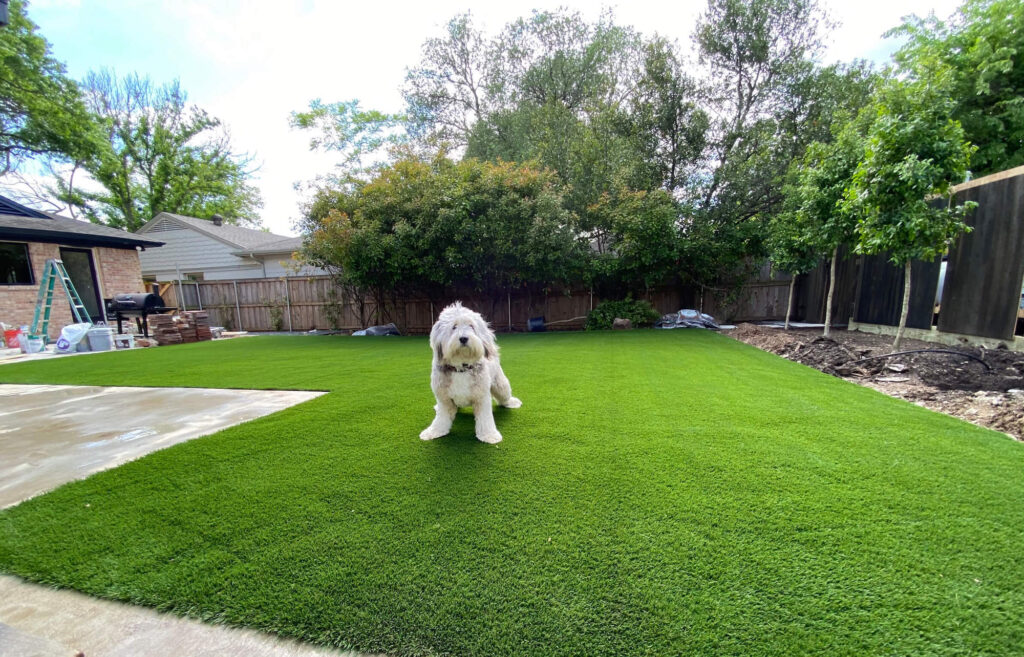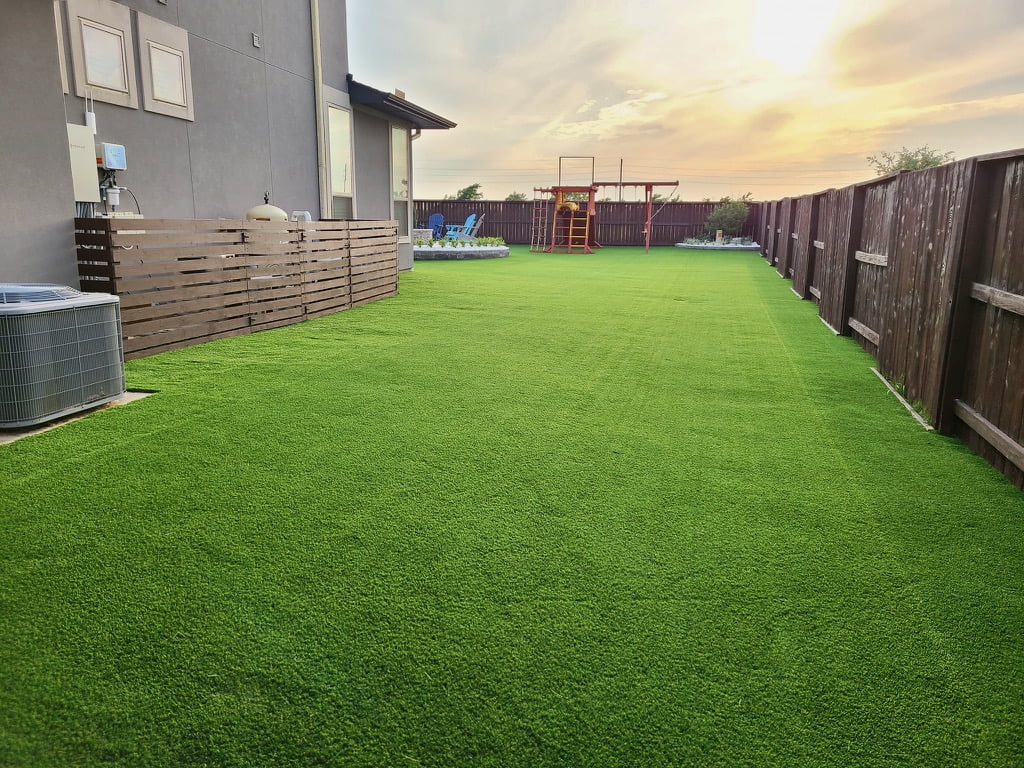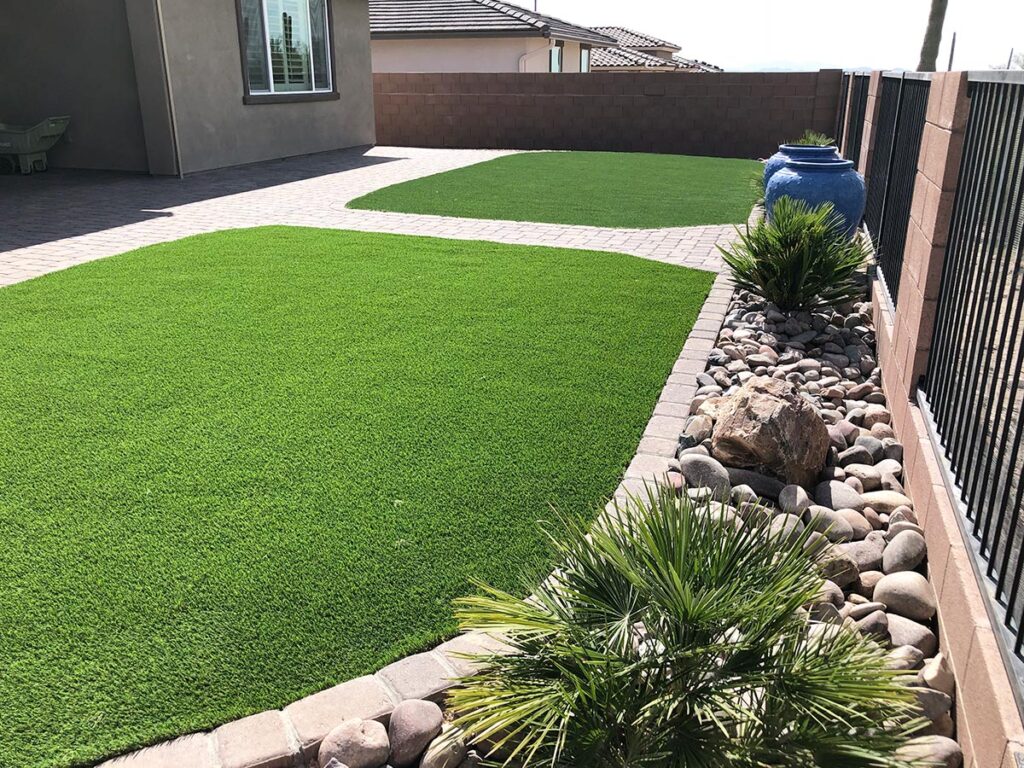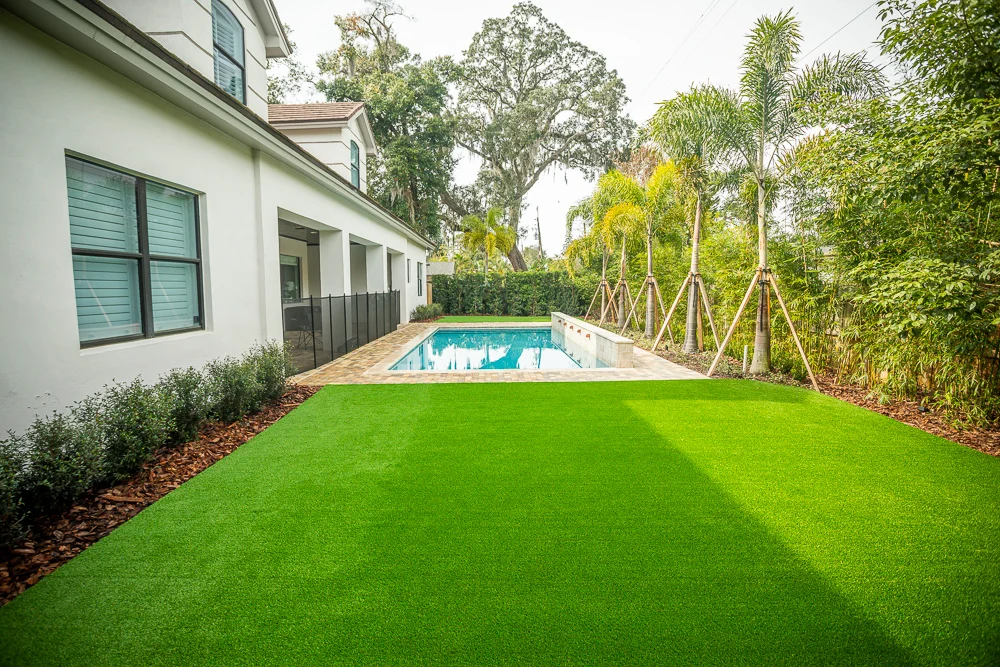Natural grass plays a huge role in creating a healthier environment by supporting the ecosystem and preserving biodiversity. However, maintaining a natural lawn can be expensive, time-consuming, and physically demanding for homeowners. Opting for an artificial lawn provides your outdoor space with the same lush and vibrant green landscape without the pain of maintenance.
If you are contemplating this huge transition, here are 8 benefits of installing an artificial lawn as a homeowner.
Resistant to disease
Natural lawns are prone to diseases such as Rhizoctonia solani, and Sclerotinia homoeocarpa, which is a pain point to many homeowners, as it requires more money and time to prevent and treat. The specific fungal disease affecting your lawn hinges on your maintenance level and the area’s climatic condition.
If you notice circular patches of brown or small, silver-dollar-sized dead patches on your grass, it’s likely an indication of a disease requiring immediate treatment with the proper fungicides.
With artificial grass, you don’t have to worry about fungal disease affecting the health and appearance of your lawn.
Pests and weeds

Natural lawns often face challenges from weeds, snakes, raccoons, grubs, and other pests, posing a significant inconvenience to homeowners in terms of time, effort, and money to keep them at bay.
Without the proper maintenance practice, weeds and pests can destroy your natural lawn. Natural grass requires soil, which creates the optimal habitat for weeds and pests to thrive. However, artificial grass in Sacramento uses a weed-proof foundation instead of natural soil, alleviating this common pain point among homeowners or property managers.
Mud and puddles
Maintaining a natural lawn in arid regions like Arizona, Texas, or Southern California often involves using a sprinkler system, leading to mud and puddles. With pets and children enjoying the lawn, you’ll find yourself frequently cleaning the mud and dirt they bring into your home. If you have an expensive carpet or rug, keeping it clean might become increasingly difficult, with more mud and dirt being brought into your house.
Additionally, natural lawns tend to flood during rain, negatively impacting their health. Whether you reside in a drought-prone area or not, flooding can harm your natural lawn. Opting for artificial turf eliminates this concern, as most synthetic lawns feature a drainage system preventing water accumulation and the formation of mud and puddles.
Save money on fertilizers
According to the University of California Agriculture & Natural Resources, you need to fertilize with 1 pound of nitrogen per 1000 sq. ft. four times a year. Aside from being time-consuming, fertilizing your lawn to maintain its lush and green appearance can be costly in the long run.
Switching to artificial turf allows you to keep evergreen landscapes without investing hugely in upkeep. This synthetic option does not require nitrogen application or the use of fertilizers yearly, allowing you to save more and allocate these funds to other aspects of your budget. It’s a sustainable and cost-effective landscaping solution.
Avoid water restriction fines

Maintaining natural lawns demands water, particularly in drought-prone regions like California, where sprinkler systems become crucial for proper watering. This would have been an easy, straightforward solution if there were no water restrictions.
The Governor of California, Jerry Brown, has recently announced a permanent water restriction, necessitating a sustainable landscaping alternative.
Watering your lawn to keep it from going brown during drought, which is still ongoing in many areas, is not only costly but also entails the risk of fines for exceeding permissible limits.
In the face of all these challenges, artificial lawns become a more attractive option. It does not require watering and saves homeowners and property managers from potential water restriction fines while still maintaining a lush and green landscape, even in times of drought.
Low maintenance
To some homeowners, spending several hours maintaining their lawns is fulfilling. For others, it’s just too much work, and they would rather spend the time preparing for a pizza party or hosting a BBQ night with friends and family.
If you don’t want to spend your valuable time tending to the lawn to make it presentable and healthy, artificial turf is a perfect alternative.
Besides, fake lawns help avoid the pressure from neighbors and HOAs, requiring you to always keep your natural lawn healthy and good-looking. With governments looking to conserve more water, more areas are now allowed to install fake lawns.
Longer Lifespan

Another advantage of a fake lawn over its natural counterpart is the aspect of life expectancy. Natural lawns tend to be affected by diseases, adverse weather conditions, and wear and tear, necessitating replacing them every few years or so.
On the other hand, synthetic turfs are non-living landscapes, which means they won’t deteriorate for many years as there is no natural lifecycle process.
However, how long an artificial turf serves you depends on the materials’ quality. Top-quality fake grass is more durable and resilient, withstanding adverse weather conditions, foot traffic, and other factors. On average, artificial lawns have a lifespan of up to 15 years, once installed, making them a practical and enduring landscape investment.
Cut down ground pollution
Ensuring your natural lawn thrives, involves applying pesticides and fertilizers, presenting potential health risks to both your beloved pets and family members, in addition to contributing to environmental pollution. In contrast, artificial turfs thrive without using nitrogen or pesticides. This eliminates the adverse effects linked with the use of these conventional lawn treatments on your outdoor landscape.
Conclusion
Natural grass presents homeowners with many challenges, from costly treatments to strenuous maintenance. While the initial installation of natural grass may appear economical, the ongoing expenses associated with its upkeep, particularly in drought-prone areas, can lead to financial strain.
Artificial turf is a favorable option for those seeking to enhance their outdoor aesthetics without the burdens of extensive maintenance. Not only is it cost-effective, but it also demands minimal upkeep. Additionally, artificial lawns boast a lifespan of 12 to 15 years, providing homeowners with long-term value and peace of mind due to their low-maintenance characteristics.






